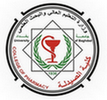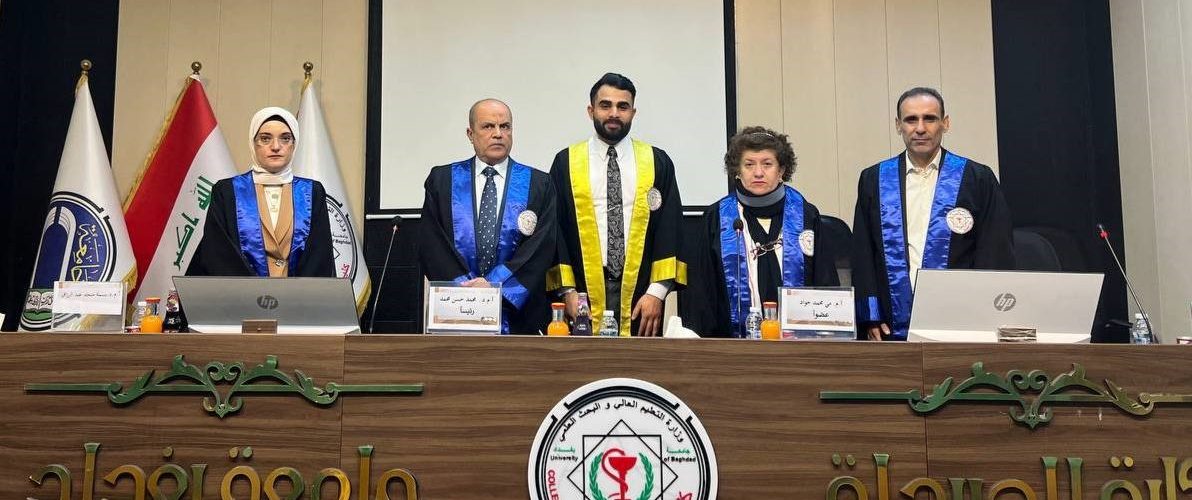The Faculty of Pharmacy discussed the MSc thesis entitled “Synthesis and Characterization of New 2-(2-Oxo-2H-Chromen-4-yl) Acetohydrazide Derivatives as Possible Antimicrobial Agents” by Kaarrar Ahmed Hachim and his supervisor, Assistant Professor Dr. Mohammed Kamil Hadi in the Pharmaceutical Chemistry Department. The study aimed to synthesize compound III, 2-[(2-oxo-2H-chromen-4-yl)oxy]acetohydrazide, starting from compound I, 4-hydroxycoumarin. Two new series of 2-[(2-oxo-2H-chromen-4-yl)oxy] acetohydrazides (compound III) have been synthesized with the aim of investigating their use as antimicrobial agents. The study included the synthesis of the first series, N-alkyl hydrazide (IV a-c), by the reaction of compound III with different halides in the presence of triethylamine (TEA) and N,N-dimethylformamide (DMF). The second series, N-acyl hydrazones (Schiff bases) (V a–d), was made by reacting compound III with various aldehydes in the presence of ethanol and glacial acetic acid. The target compounds were synthesized successfully, and their structures were characterized using ATR-FTIR and HNMR spectrum spectroscopy. All the new derivatives (IV a-c, V a-d) were studied for their in-vitro antimicrobial activity using the well diffusion technique. Utilizing amoxicillin and ciprofloxacin as standard antibacterial agents, antibacterial activity was tested against four different types of bacteria: two Gram-positive (G+ve) bacteria (Streptococcus pneumoniae and Staphylococcus aureus) and two Gram-negative (G-ve) bacteria (Escherichia coli and Pseudomonas aeruginosa). Antifungal activity was tested against Candida albicans using fluconazole as a standard antifungal agent. The results showed that all derivatives IV (a-c) and V (a-d) showed high antibacterial efficacy against Gram-positive and Gram-negative bacteria. All the investigated compounds showed notable effectiveness against Candida albicans compared to fluconazole, except compound IVa, which showed moderate activity.




